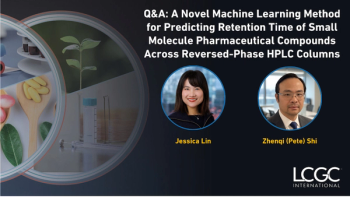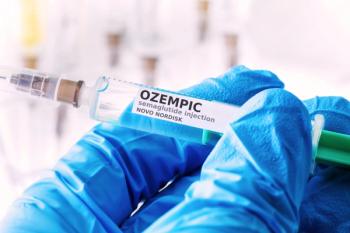
- August 2024
- Volume 20
- Issue 8
- Pages: 9–16
Advancing Pharmaceutical Analysis with Ion Chromatography
Ion chromatography (IC) is becoming increasingly important for pharmaceutical applications. In contrast to other technologies, IC can resolve multiple ionic species and polar analytes simultaneously.
Ion chromatography (IC) is becoming increasingly important for pharmaceutical applications. In contrast to other technologies, IC can resolve multiple ionic species and polar analytes simultaneously. Coupling to other methods, such as mass spectrometry, offers even more sensitivity. The high degree of automation possibilities makes IC ideal for routine quality control of drugs in bulk and pharmaceutical dosage forms. In many cases, IC has been qualified for US Pharmacopeia standards, making it a vital tool in this field.
Pharmaceutical products must meet high quality standards to minimize patient risks. A variety of analytical techniques such as titration, spectroscopic methods, and liquid chromatography (LC), are used to ensure products meet these standards (1–3). A widely recognized standardization body for ensuring safe pharmaceuticals is the United States Pharmacopeia-National Formulary (USP-NF) (4) which consists of two main parts: the USP and the NF. The USP focuses on drug substances, drug products, compounded substances, dosages, dietary supplements, and ingredients, while the NF focuses on excipients. Since 1975, the primary goal of the USP–NF has been to establish minimum testing requirements throughout pharmaceutical development and manufacturing processes to ensure drug efficacy and patient safety, and they have introduced multiple standardized procedures from this work. The modernization initiative from the USP and U.S. Food and Drug Administration (FDA), which began in 2010, has so far resulted in approximately 4300 monographs and 220 general chapters updated with state-of-the-art analytical technology (5). LC techniques are broadly applied to pharmaceutical and biopharmaceutical products (1,6) and are now cited in these monographs and chapters.
LC has the ability to separate individual components from a sample and determine multiple analytes. The separation process involves the interaction of the sample with both the mobile (liquid) and stationary (column) phases. The components of the sample are differentiated based on distinct affinities to the stationary phase, causing migration through the separation column at varying rates (7). The separated analytes of the mixture can be subsequently collected or detected, e.g., by UV/VIS spectroscopy, electrochemical detection, or conductivity.
Ion chromatography (IC) and high-performance liquid chromatography (HPLC) are among the most commonly used LC techniques in analytical chemistry. While both techniques are similar regarding the mathematical models and calculations for peak integration, there are distinct differences in terms of separation mechanisms (stationary phases), mobile phases (eluents), and commonly used detectors (8–10) (Table 1).
In the strongly regulated pharmaceutical sector, both IC and HPLC provide sensitive and selective analyses, ensuring compliance with different norms and standards. The prominence of IC has steadily increased in recent years. The USP-NF has published two general chapters on IC (<345> and <1065>), and other general chapters and monographs with IC-based test methods (e.g., <210>, <591>, <1052>, <1055>, <1084>, and <1234> –monographs of potassium, fluoride, zinc, or sodium families), which highlights the importance of IC for pharmaceutical analysis (10).
IC as a Method of Choice in Pharmaceutical Applications
IC analysis has a broad scope in the pharma industry (2,9,11–25). It can help solve various challenges when, e.g., inert instrumentation, such as PEEK capillaries, is necessary to prevent contamination, ionic analytes from a complex matrix need to be separated, or multiple analytes need to be quantified in trace concentrations. The availability of high-capacity stationary phases and sensitive detectors enables excellent separation and sensitive measurements.
The IC column significantly affects analysis quality (26). It is composed of spherical, polymeric particles made from base materials such as polystyrene-divinylbenzene (PSDVB) copolymer or polyvinyl alcohol (PVA). The base material’s compatibility with the sample matrix is crucial because it can cause undesirable interactions. Pharmaceutical analysis is manifold (3,10–13,27), as is the availability of columns for IC analysis, so there is a solution for most analytes and matrices.
The principal flow path of an IC system is shown in Figure 1. This overview highlights different flexible inline sample preparation options, detection possibilities, automation features, and columns for IC.
Simple sample preparation or even automated inline preparation procedures, avoidance of hazardous chemicals, high flexibility regarding sample matrices or the measurable range, and the option to fully automate the entire system make IC a highly capable and efficient laboratory tool, especially for pharmaceutical applications (10,27).
The following sections outline two examples of IC used in pharmaceutical analysis for trace analysis and quality control purposes.
Trace Level Nitrite Determination in Pharmaceuticals by IC to Prevent Nitrosamine Formation
N-nitrosamines are organic compounds with carcinogenic potential (28,29). Recently, N-nitrosodimethylamine (NDMA) was discovered in pharmaceuticals (28,30), while other drugs were found with nitrosamine contaminants like N-nitrosodiethylamine (NDEA) (28). The FDA has issued monitoring guidance regarding the safety concerns of such pharmaceuticals (31) because even low levels of nitrosamines pose a health risk (32). Additionally, the International Council for Harmonisation of Technical Requirements for Pharmaceuticals for Human Use (ICH) has updated its M7(R2) guideline, and the USP has released general chapter <1469> on nitrosamine impurities (31,33).
Under acidic conditions, nitrite can react with secondary or tertiary amines, producing nitrosamines. These amines are commonly used in the production of active pharmaceutical ingredients and excipients, with dimethylamine being a popular example. Nitrite impurities can be present in water, materials, or solvents, or they can be formed during drug manufacturing (34).
Regulatory guidelines recommend conducting a risk assessment to prevent nitrosamines in pharmaceutical products. Monitoring trace nitrite impurities to prevent nitrosamine formation can be one aspect of a control strategy for pharmaceutical manufacturers. IC is a precise method for measuring trace nitrite levels. Unlike other methods (e.g., photometry), IC is unaffected by chloride, eliminating the need for extensive sample preparation.
IC analysis of nitrite in pharmaceuticals requires a high-capacity separation column with UV/VIS as the preferred detection method (Figure 2). Sequential suppression (i.e., chemical suppression followed by CO2 removal using a CO2-suppressor) enables a low baseline for a more sensitive analysis and supports trace-level detection of nitrite.
In contrast to HPLC, IC offers several automated inline procedures to help save time and prevent manual errors. In this application, an intelligent pre-concentration technique with matrix elimination is used to further improve the sensitivity and robustness of the analysis. The sample (2000 μL) is loaded on a pre-concentration column (PCC) instead of a sample loop. It is pre-concentrated while the matrix is washed away with a matrix elimination solution (3000 μL ultrapure water). Afterwards, the pre-concentrated sample is directly injected on the separation column and subsequently detected with a highly sensitive detector for nitrite (UV/VIS) after sequential suppression (Figure 2).
This fully automated procedure enables detection of trace amounts of nitrite and minimizes any matrix influences. Removing the interfering sample matrix via matrix elimination improves the robustness of the analysis. Overall, this procedure is highly efficient and accurate with minimal effort, robust and stable, and very sensitive for nitrite detection.
Quality Control of Dialysis Concentrates with Ion Chromatography
Dialysis fluids require the highest standards for manufacturing and on-site preparation, specified, e.g., by the European Pharmacopeia, ISO 11663, ISO 23500, or ISO 13958 (for hemodialysis concentrates) (35–37). They typically contain water, electrolytes (e.g., sodium, potassium, calcium, and chloride), buffers (e.g., acetate or carbonate), and carbohydrates (e.g., glucose) (35,37–39). Traditionally, atomic absorption spectroscopy (AAS) is used for quality control analysis. However, AAS is restricted to cationic (metallic) components, and only a limited number of analytes can be quantified concurrently. IC offers an automated, fast, and sensitive solution to accurately quantify cationic and anionic components, including acetate, simultaneously.
Analyzing highly saline solutions is challenging and matrix elimination steps are often required for accurate analyte determination. There are two key challenges associated with chromatography: peak overlaps and column overload. If sodium and chloride concentrations are high, these peaks can overlap other nearby peaks (e.g., acetate, nitrite, or ammonium), making their quantification impossible. Column overload from highly concentrated analytes leads to peak broadening and substantial retention time shifts, which also impairs the results.
Accurate determination of all components is indispensable for dialysis concentrates (here, A-concentrates), requiring appropriate peak separation and excellent peak shapes. Using high-capacity columns helps avert matrix overload and guarantees outstanding peak separation. Thus, additional sample preparation steps are unnecessary.
A two-channel IC system was used to simultaneously determine anions and cations from the same sample. A refrigerated autosampler extended the stability of the highly diluted samples. The high-capacity columns used tolerate high flow rates, speeding up the overall run time.
In this example, all samples were diluted manually by a factor of 750. Acetate (≈ 6.5 g/L final concentration, 8.63±0.05 mg/L in the diluted samples) could be determined directly beside the high chloride content (≈ 137 g/L final concentration, 182.2±3.1 mg/L) using sequentially suppressed conductivity detection (Figure 3a). Even when the baseline is minimized via suppression, higher sensitivity can be achieved using UV/VIS detection for the analysis of potential impurities such as nitrite, bromide, and nitrate (concentrations in the diluted samples: 0.47±0.07 mg/L, <0.04 mg/L, and 0.32±0.02 mg/L, respectively (Figure 3c).
Cations were found in moderate to high concentrations (sodium 112.9±1.5 mg/L, potassium 3.45±0.04 mg/L, calcium 2.68± <0.01 mg/L, and magnesium 0.54±0.04 mg/L in the diluted samples) and could be accurately determined using non-suppressed conductivity (Figure 3b). However, cation suppression can improve the sensitivity of this analysis. Cationic impurities can also be measured with high precision using a high-capacity column.
Overall, IC is a highly efficient, accurate technique for the quality analysis of hemodialysis concentrates. Within 25 min, the results for major concentrate components (i.e., acetate, chloride, sodium, potassium, calcium, and magnesium) and impurities (e.g., nitrite or ammonium) can be obtained simultaneously in one run. This qualifies IC as a high-throughput economic alternative to traditional methods. Additionally, the integration of ion chromatographs in different softwares provides a flexible solution for many analytical laboratories.
Conclusion
IC can help to solve various separation issues in pharmaceutical analysis. It is the ideal technique for the separation and simultaneous analysis of many ions and polar substances.
Automated inline sample preparation techniques speed up the overall analysis and improve accuracy. The variety of detection methods (e.g., conductivity, UV/ VIS, amperometry, or coupling with mass spectrometers) and separation columns makes IC highly flexible.
Several standardization organizations now include IC methods in their standard portfolio. Ease-of-use, accuracy, high throughput, and integration in various software systems shows that IC complies with the demands of modern pharmaceutical laboratories.
References
(1) Nikolin, B.; Imamović, B.; Medanhodžić-Vuk, S.; Sober, M. High Performance Liquid Chromatography in Pharmaceutical Analysis. Bosnian Journal of Basic Medical Sciences 2004, 4 (2), 5. DOI:
(2) Jenke, D. Application of Ion Chromatography in Pharmaceutical and Drug Analysis. J. Chromatogr. Sci. 2001, 49 (7), 524–539. DOI:
(3) Siddiqui, M. R.; AlOthman, Z. A.; Rahman, N. Analytical Techniques in Pharmaceutical Analysis: A Review. Arabian Journal of Chemistry 2017, 10, S1409–S1421. DOI:
(4) The United States Pharmacopeial Convention. Building trust for over 200 years: A Timeline of USP.
(5) The United States Pharmacopeial Convention. Monograph Modernization History.
(6) Rees, V. How Is Liquid Chromatography Used in the Pharmaceutical Industry? European Pharmaceutical Review 2020 (April).
(7) Betancourt, J.; Gottlieb, S. Liquid
Chromatography. Chemistry LibreTexts.
(8) Kappes, S. When HPLC Fails: IC in Food, Water, and Pharmaceutical Analysis; WP-045; Metrohm AG: Herisau, Switzerland, 2019.
(9) Klein, M. USP Monograph Modernization Initiative Leading to Modern Ion Chromatography-Based Methods. White paper, WP-092EN–2023-11, Metrohm AG, Herisau, Switzerland 2023, 8.
(10) Bhattacharyya, L.; Rohrer, J. S. Applications of Ion Chromatography for Pharmaceutical and Biological Products; John Wiley & Sons, 2012.
(11) Kappes, S. When HPLC Fails: IC in Food, Water, and Pharmaceutical Analysis. White paper, WP-045EN, Metrohm AG, Herisau, Switzerland 2019.
(12) Kappes, S.; Steinbach, A.; Ruth, K. IC: The All-Rounder in Pharmaceutical Analysis. White paper, WP-019EN, Metrohm AG, Herisau, Switzerland 2017, 6.
(13) Metrohm AG. Pharmaceutical Analysis: Quality Control of Pharmaceuticals. Brochure, 8.000.5139EN – 2015-09, Metrohm AG, Herisau, Switzerland 2015, 40.
(14) Subramanian, N. H.; Wille, A. Inline Sample Preparation – An Effective Tool for Ion Analysis in Pharmaceutical Products. Metrohm AG, 8.000.6010EN.
(15) Metrohm AG. Bring Your USP Methods up to Date! - The Benefits of Metrohm Ion Chromatography for Your Analytics of APIs, Impurities, and Excipients. Brochure, 8.000.5436EN – 2023-05, Metrohm AG, Herisau, Switzerland 2023, 3.
(16) Metrohm AG. Quality Control of Dialysis Concentrates – Comprehensive Analysis of Anions, Acetate, and Cations by IC; Application Note, AN-D-003-2022-08; Metrohm AG: Herisau, Switzerland, 2022.
(17) Metrohm AG. Qualitative Determination of Anions in Urine to Verify Adulteration; Application Note, AN-S-215, 2005; Metrohm AG: Herisau, Switzerland, 2005.
(18) Metrohm AG. Mannitol, Rhamnose, Lactulose and Lactose in Blood Serum with Pulsed Amperometric Detection (PAD); Application Note, AN-P-063, 2016; Metrohm AG: Herisau, Switzerland, 2016.
(19) Metrohm AG. Standard Methods in Water Analysis; Application Bulletin, AB-221/3 e; Metrohm AG: Herisau, Switzerland, 2015.
(20) Bruttel, A.; Seifert, N.; Läubli, M.; Loyall, U.; Meier, L. Monograph: Analysis of Water Samples and Water Constituents with Metrohm Instruments, 8.108.5071EN-2021-02; Monograph: Analysis of water samples and water constituents with Metrohm instruments; Metrohm AG: Herisau, Switzerland, 2021.
(21) Ruth, K. Measuring Organic Acids and Inorganic Anions with Ion Chromatography Mass Spectrometry; White paper WP-086EN – 2023-01; Metrohm AG: Herisau, Switzerland, 2023.
(22) Metrohm AG. Trace Monitoring in Distilled Water Using Ion Chromatography; Application Note, AN-Q-008; Metrohm AG: Herisau, Switzerland, 2015.
(23) Gandhi, J.; Pfundstein, P.; Martin, C.; Schulz, W.; Flottmann, D. Monitoring of Iodine- and Gadolinium-Containing Contrast Media in Water Treatment Plants; Technical Poster, 8.000.6085EN; Metrohm AG: Herisau,
Switzerland, 2012.
(24) Pfundstein, P.; Martin, C.; Schulz, W.; Ruth, K. M.; Wille, A.; Moritz, T.; Steinbach, A.; Flottmann, D. IC–ICP -MS Analysis of Gadolinium-Based MRI Contrast Agents (TA-023); LCGC Asia Pacific 2011.
(25) Metrohm AG. Wastewater Analysis in Treatment Plants; Brochure, 8.000.5142EN – 2015-10; Metrohm AG: Herisau, Switzerland, 2015.
(26) Diederich, V.; Suess, E. Efficient Sample Preparation and High-Capacity Columns for Successful Food and Beverage Analysis. The Column 2023, 19 (6), 2–9.
(27) Michalski, R. Application of Ion Chromatography in Clinical Studies and Pharmaceutical Industry. Mini Reviews in Medicinal Chemistry 2014, No. 10.
(28) Akkaraju, H.; Tatia, R.; Mane, S. S.; Khade, A. B.; Dengale, S. J. A Comprehensive Review of Sources of Nitrosamine Contamination of Pharmaceutical Substances and Products. Regulatory Toxicology and Pharmacology 2023, 139, 105355. DOI:
(29) Magee, P. N.; Barnes, J. M. The Production of Malignant Primary Hepatic Tumours in the Rat by Feeding Dimethylnitrosamine. British Journal of Cancer 1956, 10 (1), 114–122. DOI:
(30) Mansouri, I.; Botton, J.; Semenzato, L.; Haddy, N.; Zureik, M. N-nitrosodimethylamine-Contaminated Valsartan and Risk of Cancer: A Nationwide Study of 1.4 Million Valsartan Users. Journal of the American Heart Association 2022, 11 (24), e8067. DOI:
(31) Tuesuwan, B.; Vongsutilers, V. Current Threat of Nitrosamines in Pharmaceuticals and Scientific Strategies for Risk Mitigation. Journal of Pharmaceutical Sciences 2023, 112 (5), 1192–1209. DOI:
(32) U.S. Department of Health and Human Services Food and Drug Administration; Center for Drug Evaluation and Research (CDER). Control of Nitrosamine Impurities in Human Drugs.
(33) International Council for Harmonisation of Technical Requirements for Pharmaceuticals for Human Use (ICH). M7(R2) – Assessment and Control of DNA Reactive (Mutagenic) Impurities in Pharmaceuticals to Limit Potential Carcinogenic Risk.
(34) U.S. Pharmacopeia. USP-NF(s1469). Nitrosamine Impurities. DOI:
(35) Hoenich, N.; Thijssen, S.; Kitzler, T.; Levin, R.; Ronco, C. Impact of Water Quality and Dialysis Fluid Composition on Dialysis Practice. BPU 2008, 26 (1), 6–11. DOI:
(36) Hoenich, N. A.; Ronco, C. Haemodialysis Fluid: Composition and Clinical Importance. BPU 2007, 25 (1), 62–68. DOI:
(37) Parker, J. N.; Parker, P. M. Hemodialysis - A Medical Dictionary, Bibliography, and Annotated Research Guide to Internet References; ICON Health Publications, USA, 2004.
(38) Coulliette, A. D.; Arduino, M. J. Hemodialysis and Water Quality. Seminars in Dialysis 2013, 26 (4), 427–438. DOI:
(39) Catto, G. R. D. Haemodialysis; Kluver Academic Publishers, Dordrecht, Boston, London, 1989.
About the Author
Elke Süss is currently an application specialist in the Metrohm Competence Center for Ion Chromatography. With an M.Sc. in geoecology, she received a Ph.D. in environmental geochemistry in 2011 from Bayreuth University, Germany. In 2018, she joined Metrohm AG as a member of the IC team.
Articles in this issue
over 1 year ago
Vol 20 No 8 The Column August 2024 Europe PDFNewsletter
Join the global community of analytical scientists who trust LCGC for insights on the latest techniques, trends, and expert solutions in chromatography.




